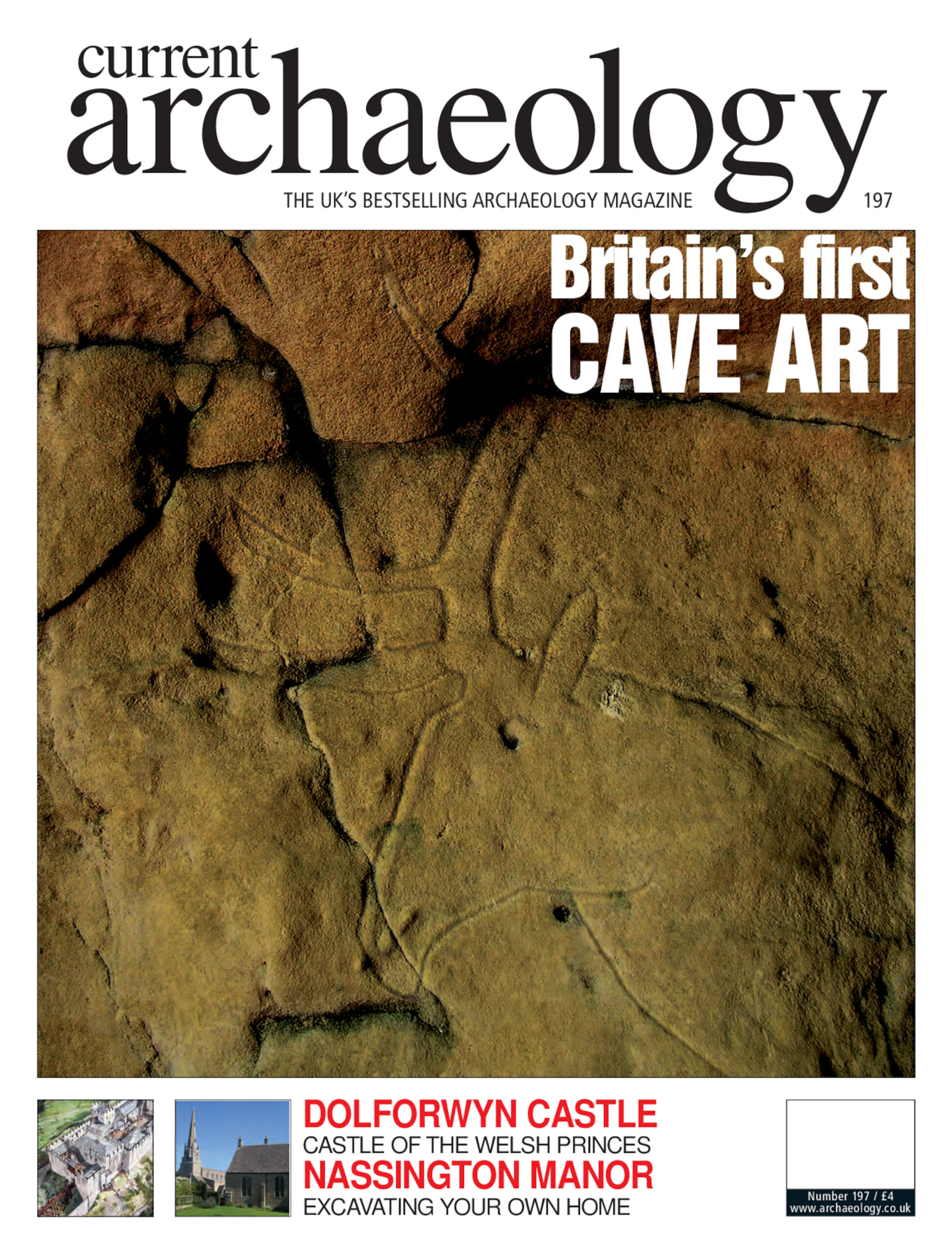Amazing! For the first time, Ice Age cave art has been found in Britain. Countless people have visited Creswell Crags on the Nottinghamshire-Derbyshire border near Worksop, including distinguished archaeologists who have dug there, yet have seen nothing. The caves were thought to be devoid of the kind of Upper Palaeolithic art that is famous in France and Spain. Yet now Paul Bahn and colleagues have noticed not paintings, but engravings of animals high on cave walls and ceilings. Full publication is awaited, but in the meantime we are delighted that Paul has given us a first-hand account of how the discoveries came to be made, together with some splendid photographs.
The hunt is now on for more engravings in British caves, and lo and behold, another team has found some at Aveline’s Hole in north Somerset. Upper Palaeolithic too? Perhaps to be more cautious, we should put them no earlier than the Mesolithic period, when the cave was used for burials.
From the Palaeolithic we then leap forward to the Middle Ages. The Edwardian castles of North Wales are some of the finest examples of military architecture in the World. The trouble is they are all English: what about the Welsh castles? When CADW (Welsh Historic Monuments) was formed in the 1980s they decided to concentrate on excavating and displaying some Welsh castles too. At Dolforwyn, in the centre of the Welsh Marches, Lawrence Butler has now uncovered one of the finest of these, and here he reveals his discoveries and asks the big question: what is the difference between a Welsh castle and an English castle?
And then to Nassington, a picturesque village in Northamptonshire. Nassington offers the prime example of ‘Digging-up-yourown- home’ archaeology. When Jane Baile acquired the Prebendal Manor house at Nassington, it was a somewhat undistinguished structure. Now, 30 years later, it has been excavated and restored, and the history has been worked out with the help of the Time Team. The house is now open to visitors, and here we look at how Jane set about digging up her own home – and what it was like when King Cnut (Canute) came to visit.
Coming further forward in time, we come down to Oliver Cromwell who had trouble not only with Royalist English and the unruly Irish, but also with rebellious Scots. He therefore sent a fleet headed by the Swan to overawe the Scots. But at Duart Point it sank. Recently the wreck has been discovered and here Colin Martin tells us about what has been discovered and how it was identified.
And there is a lot more – the Diary, Books, and News items which include Bronze Age carvings, a gold bracelet and what might be the smallest witch bottle ever discovered. Good reading!
Jeffrey May and Andrew Selkirk

